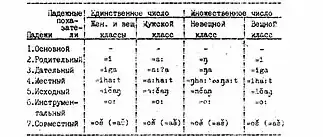Kott language
The Kott (Kot) language (Russian: Коттский язык) is an extinct Yeniseian language that was formerly spoken in central Siberia by the banks of Mana River, a tributary of the Yenisei river. It became extinct in the 1850s. Kott was closely related to Ket, still spoken farther north along the Yenisei river. Assan, a close relative, is sometimes considered a dialect of Kott.[1]
| Kott | |
|---|---|
| Native to | Russia |
| Ethnicity | Kott, Asan |
| Extinct | 19th Century |
Dené–Yeniseian?
| |
| Dialects |
|
| Language codes | |
| ISO 639-3 | zko |
| Glottolog | kott1239 |
In 1858, Matthias Castrén published the grammar and dictionary (Versuch einer jenissei-ostjakischen und kottischen Sprachlehre), which included material on the Kott and Ket (Yenisei-Ostyak) languages. There also exists a book made by G.K.Verner "kottskij jazyk" about the Kott language.[2]

Kott had been influenced by Turkic languages, and had borrowed some words from Turkic languages. For example Kott baktîr- ‘to praise’ comes from Proto-Turkic *paktïr or Kott kolá ‘copper, brass’ comes from Proto-Turkic *kola.[3]
References
- Werner, Heinrich (1997). Abriß der kottischen Grammatik [Kott Grammar Outline] (in German). Wiesbaden: Harrassowitz. pp. 5–6. ISBN 3-447-03971-X.
- Verner, G. K. (Г. К. Вернер) (1990). Kottsky yazyk Коттский язык [Kott Language] (in Russian). Rostov-na-Donu: Izdatel'stvo rostovskogo universiteta. ISBN 5-7507-0357-6.
- Khabtagaeva, Bayarma (2015). "Some Remarks on Turkic Elements of Mongolic Origin in Yeniseian". Studia Etymologica Cracoviensia. 20 (2): 111–126. doi:10.4467/20843836SE.15.008.2794.
.svg.png.webp)